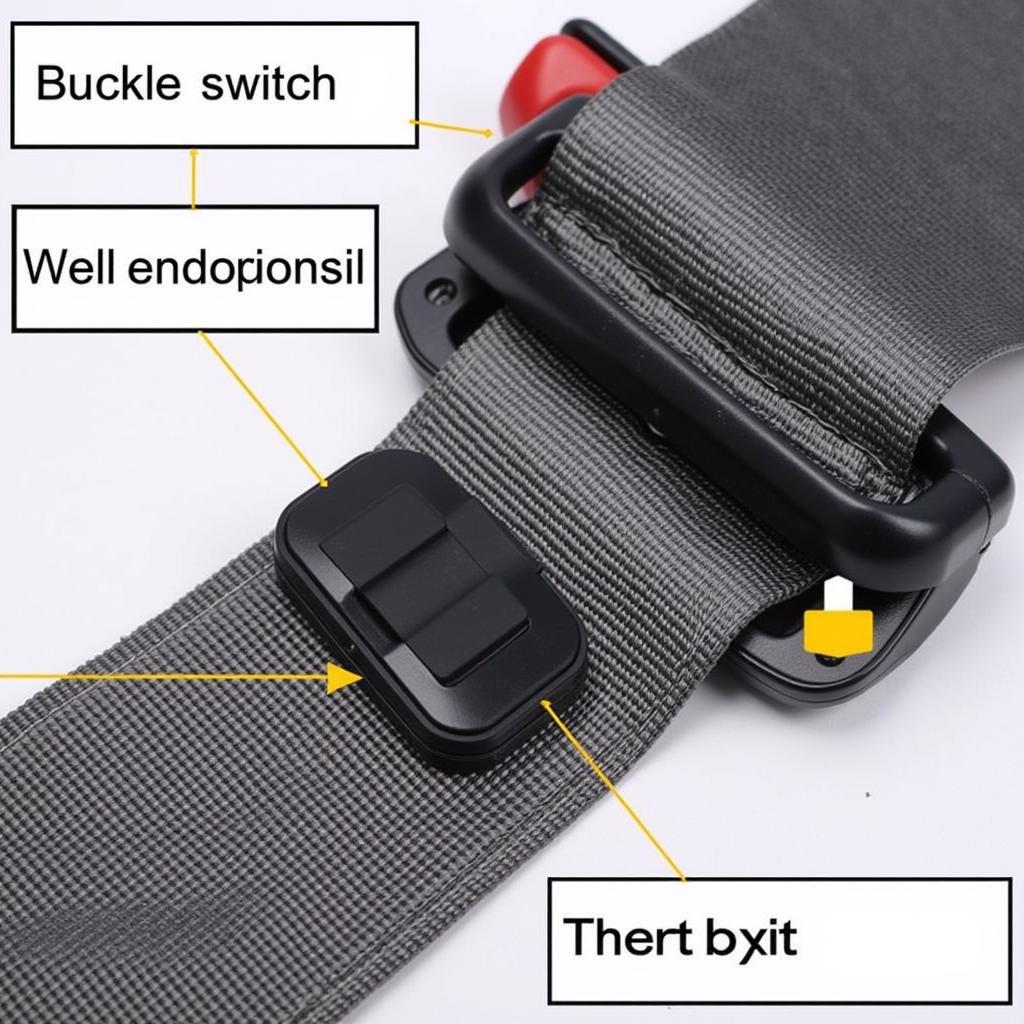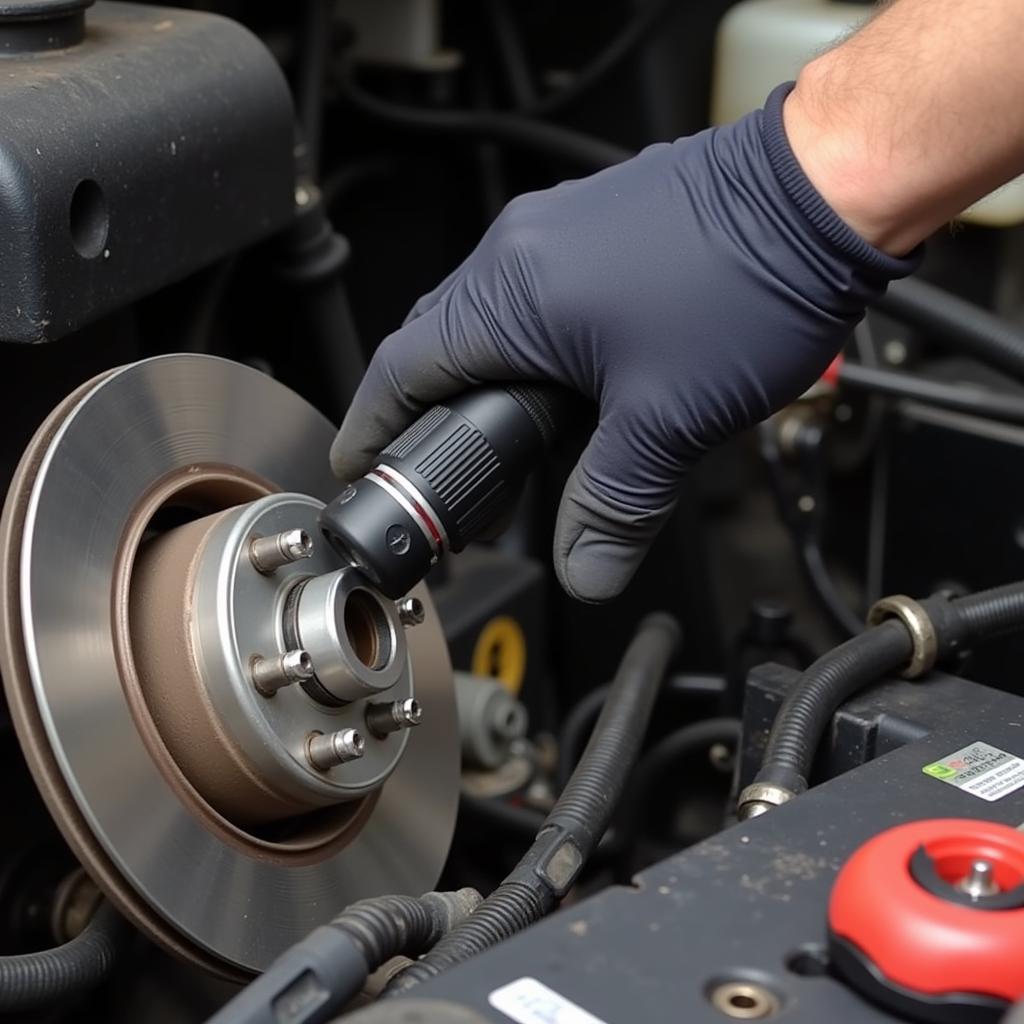The 2016 Dodge Challenger is a powerful and stylish muscle car, but like any vehicle, it can experience occasional issues. One common problem reported by some owners is a persistent seat belt warning light or chime, even when the seat belts are fastened. This can be annoying and potentially distracting while driving. This comprehensive guide will delve into the common causes of a 2016 Challenger seat belt warning and provide you with practical solutions to address this issue.
Understanding the Seat Belt Warning System
The seat belt warning system in your 2016 Challenger is designed to enhance safety by reminding the driver and passengers to buckle up. It typically consists of a warning light on the dashboard, a chime sound, and sometimes a message displayed on the instrument cluster. The system uses sensors to detect whether the seat belts are fastened. If a sensor malfunctions or detects an issue, it can trigger the warning system even if the seat belts are properly buckled.
Common Causes of a 2016 Challenger Seat Belt Warning
Several factors can contribute to a persistent seat belt warning in your 2016 Challenger:
- Faulty Seat Belt Buckle Switch: The most common culprit is a malfunctioning seat belt buckle switch. This switch is responsible for detecting when the seat belt is latched. Over time, it can wear and tear, become dirty, or get damaged, leading to inaccurate readings.
- Wiring Issues: The wiring harness connected to the seat belt buckle switch can also be prone to issues. Loose connections, corroded wires, or damaged wiring can disrupt the signal transmission, triggering the warning.
- Seat Belt Pretensioner Problems: In some cases, a faulty seat belt pretensioner can also trigger the warning light. The pretensioner is a safety device that tightens the seat belt in the event of a collision. If it malfunctions, it can cause electrical issues that affect the warning system.
- Software Glitches: Modern vehicles like the 2016 Challenger rely heavily on software. Occasionally, software glitches in the body control module (BCM) or related modules can lead to false seat belt warnings.
Troubleshooting the Seat Belt Warning
Before heading to a mechanic, you can try some troubleshooting steps to identify the root cause of the problem:
- Check the Seat Belt Buckle: Inspect the seat belt buckle for any visible damage, debris, or foreign objects that might be obstructing the latching mechanism. Ensure the buckle is properly latched and there’s no play in the connection.
- Inspect the Wiring: Visually examine the wiring harness connected to the seat belt buckle switch for any loose connections, signs of corrosion, or damage. If you notice any issues, try reconnecting loose connections or cleaning corroded areas.
- Check for Diagnostic Trouble Codes (DTCs): If you have access to an OBD-II scanner, connect it to your Challenger’s diagnostic port and check for any stored DTCs related to the seat belt system. These codes can provide valuable clues about the source of the problem.
Solutions for a 2016 Challenger Seat Belt Warning
Depending on the cause of the problem, here are some potential solutions for addressing the seat belt warning in your 2016 Challenger:
- Clean or Replace the Seat Belt Buckle Switch: If the buckle switch is dirty or malfunctioning, cleaning it with electrical contact cleaner might resolve the issue. If cleaning doesn’t help, replacing the buckle switch is a relatively straightforward repair that can be done at home with basic tools.
- Repair or Replace Damaged Wiring: If you identified any wiring issues during your inspection, repair or replace the damaged sections of the wiring harness. It’s crucial to use the correct gauge and type of wire for a reliable connection.
- Address Seat Belt Pretensioner Issues: If you suspect a faulty seat belt pretensioner, it’s best to consult a qualified mechanic for diagnosis and repair. Tampering with the pretensioner system can be dangerous, so leave this task to the professionals.
- Update or Reset Software: If you suspect a software glitch, try updating your Challenger’s software to the latest version. Sometimes, software updates include bug fixes that can address such issues. If an update isn’t available or doesn’t resolve the problem, a software reset or recalibration might be necessary.
“It’s crucial to address a persistent seat belt warning promptly, not just for your safety but also because it might be a symptom of a more significant underlying issue.” – John Miller, Automotive Electrician.
Conclusion
A persistent seat belt warning in your 2016 Challenger can be a nuisance, but understanding the potential causes and solutions can help you address it effectively. By following the troubleshooting steps and considering the solutions outlined in this guide, you can potentially resolve the issue yourself or determine when professional assistance is needed. Don’t ignore this warning; prioritize your safety and ensure your Challenger is in optimal condition.


